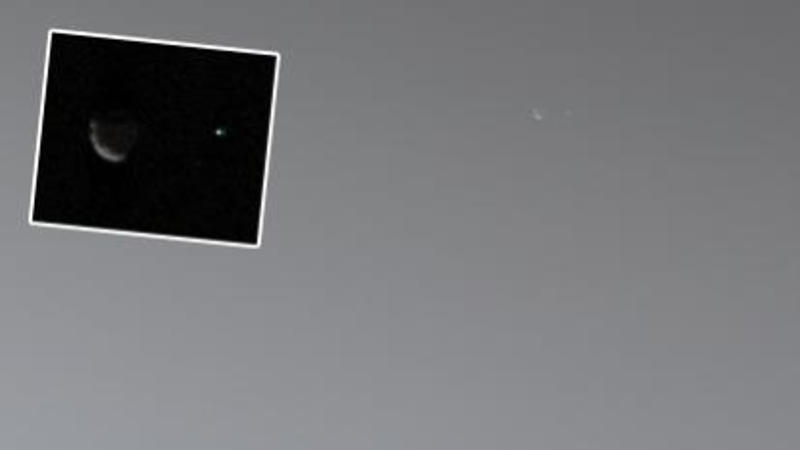Published 23:34 IST, September 18th 2024
NASA’s Curiosity Rover Captures First-Ever Photo of Earth with Mars' Moon Phobos
However, Phobos is slowly spiraling toward Mars, moving closer at a rate of about six feet (1.8 meters) every century.

In a groundbreaking achievement, NASA’s Curiosity rover has captured an awe-inspiring view from the surface of Mars, marking the first time that Earth and the Martian moon Phobos have been photographed together. This remarkable image, taken on September 5, showcases Earth setting in Mars’ night sky as Phobos rises nearby. The stunning sight was captured by Curiosity’s Mast Camera (Mastcam) and later shared by NASA on September 13.
The image comprises five short exposures and twelve long exposures, providing a clear view of the rocky Martian terrain in the foreground, while Earth and Phobos are visible in the upper right. NASA officials highlighted the significance of the moment, stating, “It's the first time an image of the two celestial bodies have been captured together from the surface of Mars.”
In the released image, an inset identifies Phobos on the left and Earth on the right. NASA added that from the rover’s perspective, “the inset area would be about half the width of a thumb held at arm's length.”
Phobos, the larger of Mars’ two moons, is named after the Greek god of fear. Its smaller companion, Deimos, orbits farther away. Phobos’ orbit around Mars brings it as close as 3,700 miles (6,000 kilometers) from the planet’s surface, making it the closest natural satellite to its primary body in the solar system. However, Phobos is slowly spiraling toward Mars, moving closer at a rate of about six feet (1.8 meters) every century. Scientists predict that the moon will either crash into Mars or break apart in about 50 million years due to this gradual approach.
The Curiosity rover, which landed in Gale Crater in August 2012, has been exploring Mars for over a decade. The photo of Earth and Phobos was taken on the rover’s 4,295th Martian day, or sol, of its mission. A Martian sol is slightly longer than an Earth day, lasting approximately 24 hours and 40 minutes.
The foreground of the image captures a Martian rock formation called Texoli, a butte situated on lower Mount Sharp within Gale Crater. Curiosity has been ascending this 3-mile-tall (5-kilometer-tall) mountain since 2014 in its quest to study Mars’ geological history and gain insight into the planet’s past.
This historic photograph adds another milestone to Curiosity’s legacy of scientific achievements on the Red Planet.
Updated 23:34 IST, September 18th 2024



